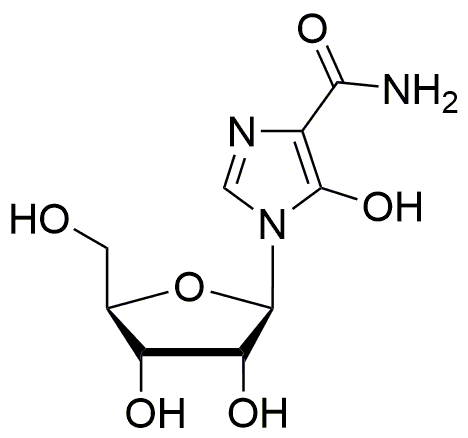Mizoribine is widely utilized in research focused on:
- Immunosuppressive Therapy: This compound is primarily used in transplant medicine to prevent organ rejection by suppressing the immune response, making it essential for patients undergoing kidney transplants.
- Autoimmune Disease Treatment: Mizoribine is effective in managing conditions like rheumatoid arthritis and lupus, providing relief by modulating the immune system's activity.
- Research in Pharmacology: It serves as a valuable tool in pharmacological studies to understand immune responses and the development of new immunosuppressive agents.
- Combination Therapies: Often used in conjunction with other immunosuppressants, it enhances treatment efficacy while potentially reducing side effects compared to higher doses of single agents.
- Investigational Studies: Mizoribine is being explored in clinical trials for various conditions, including certain cancers, where immune modulation may improve treatment outcomes.
General Information
Properties
Safety and Regulations
Applications
Mizoribine is widely utilized in research focused on:
- Immunosuppressive Therapy: This compound is primarily used in transplant medicine to prevent organ rejection by suppressing the immune response, making it essential for patients undergoing kidney transplants.
- Autoimmune Disease Treatment: Mizoribine is effective in managing conditions like rheumatoid arthritis and lupus, providing relief by modulating the immune system's activity.
- Research in Pharmacology: It serves as a valuable tool in pharmacological studies to understand immune responses and the development of new immunosuppressive agents.
- Combination Therapies: Often used in conjunction with other immunosuppressants, it enhances treatment efficacy while potentially reducing side effects compared to higher doses of single agents.
- Investigational Studies: Mizoribine is being explored in clinical trials for various conditions, including certain cancers, where immune modulation may improve treatment outcomes.
Documents
Safety Data Sheets (SDS)
The SDS provides comprehensive safety information on handling, storage, and disposal of the product.
Product Specification (PS)
The PS provides a comprehensive breakdown of the product’s properties, including chemical composition, physical state, purity, and storage requirements. It also details acceptable quality ranges and the product's intended applications.
Certificates of Analysis (COA)
Search for Certificates of Analysis (COA) by entering the products Lot Number. Lot and Batch Numbers can be found on a product’s label following the words ‘Lot’ or ‘Batch’.
*Catalog Number
*Lot Number
Certificates Of Origin (COO)
This COO confirms the country where the product was manufactured, and also details the materials and components used in it and whether it is derived from natural, synthetic, or other specific sources. This certificate may be required for customs, trade, and regulatory compliance.
*Catalog Number
*Lot Number
Safety Data Sheets (SDS)
The SDS provides comprehensive safety information on handling, storage, and disposal of the product.
DownloadProduct Specification (PS)
The PS provides a comprehensive breakdown of the product’s properties, including chemical composition, physical state, purity, and storage requirements. It also details acceptable quality ranges and the product's intended applications.
DownloadCertificates of Analysis (COA)
Search for Certificates of Analysis (COA) by entering the products Lot Number. Lot and Batch Numbers can be found on a product’s label following the words ‘Lot’ or ‘Batch’.
*Catalog Number
*Lot Number
Certificates Of Origin (COO)
This COO confirms the country where the product was manufactured, and also details the materials and components used in it and whether it is derived from natural, synthetic, or other specific sources. This certificate may be required for customs, trade, and regulatory compliance.


